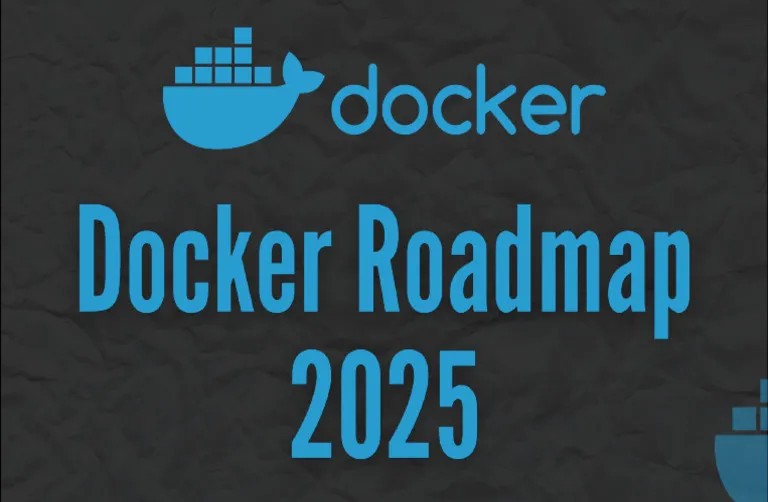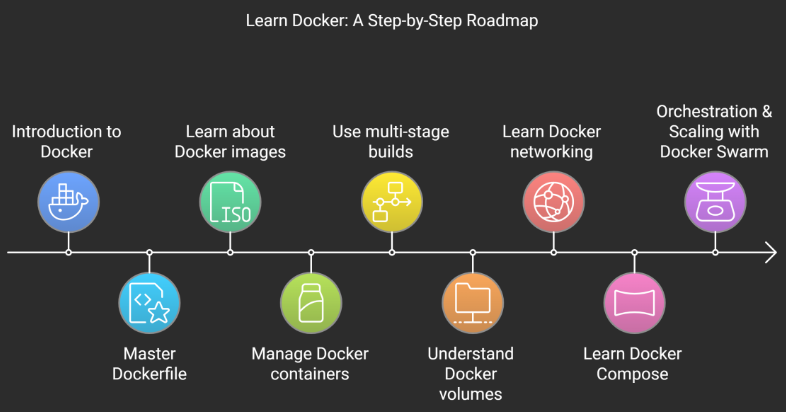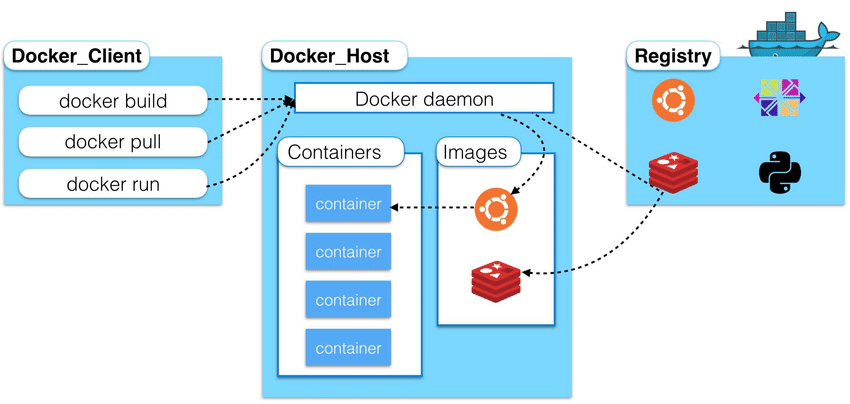There are no items in your cart
Add More
Add More
| Item Details | Price | ||
|---|---|---|---|
Docker has become one of the most important tools in the world of DevOps. It helps engineers run applications inside containers, which are lightweight and isolated environments. This makes applications run the same way everywhere — whether on your laptop, a testing server, or in production.
In 2025, learning Docker is a must for DevOps engineers. It will help you build faster, avoid errors, and manage applications at scale. In this blog, we’ll go step by step through a simple and practical roadmap to learn Docker.
Why Learn Docker?
1. Speed : Docker containers start in seconds, much faster than traditional virtual machines. This speed allows developers and DevOps engineers to build, test, and deploy applications quickly, making the development cycle more efficient.
2. Portability : Applications inside Docker containers can run anywhere — on a laptop, a testing server, or in the cloud — without changes. This portability removes the “works on my machine” problem and ensures consistent performance.
3. Scalability : Docker makes scaling easy by letting you run multiple containers of the same application. This is ideal for handling high traffic and building microservices-based architectures where each service can grow independently.
4. Career Growth : Docker has become a must-have skill for DevOps engineers. Companies across the globe use Docker in their CI/CD pipelines and cloud platforms. Learning Docker improves your job opportunities, helps you stand out in interviews, and boosts your career growth in DevOps.
What is Docker?
Containers are lightweight, standalone packages that include everything needed to run an application — code, runtime, libraries, and system tools.

Docker architecture and its components
Docker makes use of a client-server architecture. The Docker client talks with the docker daemon which helps in building, running, and distributing the docker containers. The Docker client runs with the daemon on the same system or we can connect the Docker client with the Docker daemon remotely. With the help of REST API over a UNIX socket or a network, the docker client and daemon interact with each other.
Components of Docker Architecture :
Docker Engine The main part of Docker that runs on your host machine. It provides the platform to build, run, and manage containers.
Docker volume provide a way to persist data generated by containers, even if the container is stopped or deleted.
It’s like saving your work on a USB drive—no matter how many times you replace your laptop (container), your files (data) are still safe.Docker Compose Docker Compose lets you define and manage multi-container applications using a single YAML file. You can start multiple services (like app + database) with just one command.Using Docker in CI/CD pipelines means applications are built, tested, and deployed inside containers. This ensures consistency across environments. It’s like having a standard box for shipping products—no matter where it goes, the contents remain the same and safe.
How containers communicate with each other across different networks (bridge, host, overlay).
Tue Aug 26, 2025
"DevOps is the union of people, processes, and products to enable continuous delivery of value to our end users." - Donovan Brown
Ayushman Sen is a DevOps Engineer at CloudDevOpsHub with a passion for cloud technologies and automation. He enjoys writing blogs to share his DevOps knowledge and insights with the community. A true DevOps enthusiast, Ayushman is also passionate about traveling, listening to music, and playing musical instruments.

Ayushman Sen
DevOps Engineer at CloudDevOpsHub